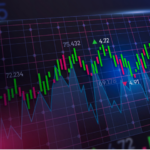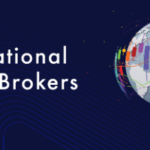I will discuss the How to Buy ETFs on Fidelity through a step-by-step process. If you are new to Fidelity or investing altogether, this guide will empower you to navigate the platform, select appropriate ETFs, and make informed decisions using Fidelity’s intuitive tools and commission-free trades.
What is an ETF?
An ETF is an Exchange-Traded Fund, a variety of investment fund which accumulates multiple resources like stocks, bonds, and commodities, trading on stock exchanges similar to ordinary shares.
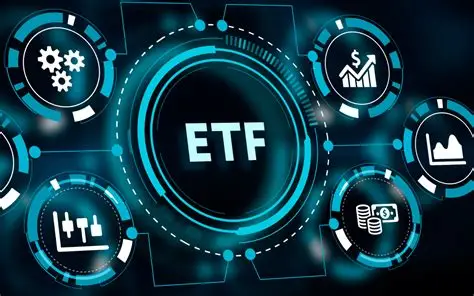
ETFs are particularly beneficial for investors looking to diversify their portfolios, as they can easily achieve diversification without purchasing individual assets. ETFs are economical with low fees charged, flexible, transparent and offer great value for money which makes them preference for novice and seasoned investors. The most common types of ETFs are the index ETFs, sector ETFs and bond ETFs.
How to Buy ETFs on Fidelity
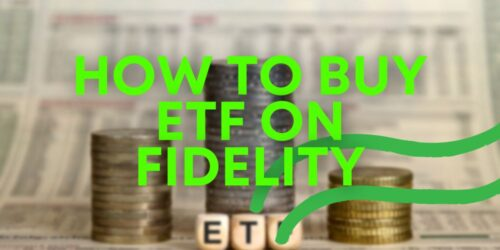
Example: Purchasing an IVV ETF using Fidelity
Step 1: Access your Fidelity Account
Click on Fidelity’s website and enter your username and password to access your account.
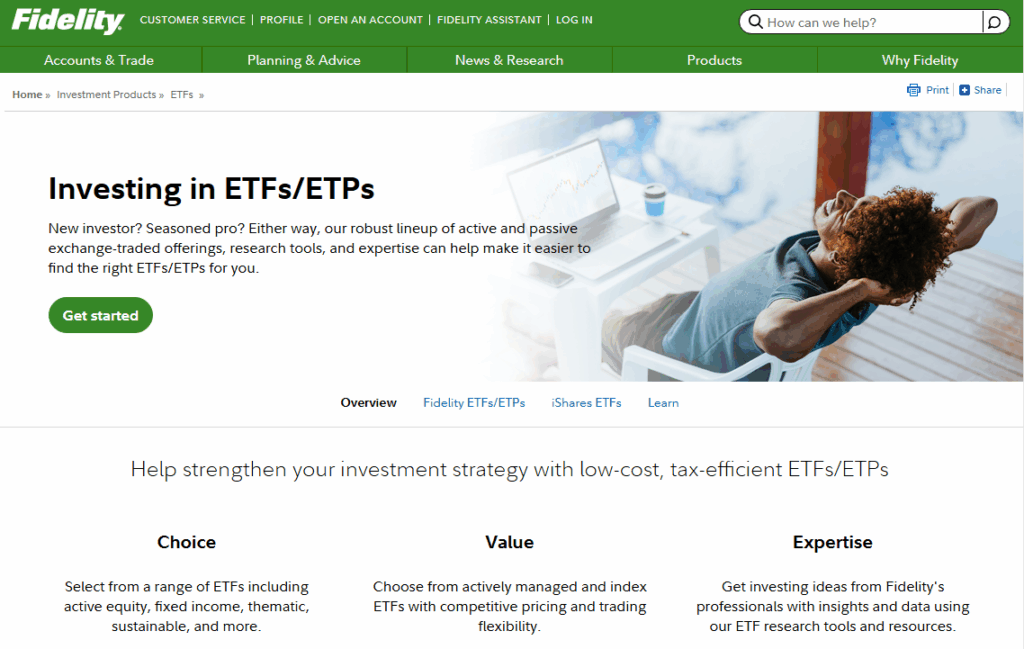
Step 2: Go to Trade Page
Head over to the top menu and click on “Accounts & Trade” then select “Trade.”
Step 3: Select Your Account
Choose the brokerage account that you wish to make the purchase from.
Step 4: Fill in the Trade Information
- Action: Choose “Buy”
- Symbol: Enter
IVV(iShares Core S&P 500 ETF) - Quantity: Type in the number of shares you wish to purchase
- Order Type: Select “Market” (executes at current price) or “Limit” (you set the price)
- Time in Force: Choose “Day” or “Good ‘til Canceled”
Step 5: Submit and Preview
To review your trade, click on “Preview Order.” If everything meets your expectations, click “Place Order.”
Why Choose Fidelity for ETF Investing?
No Cost Tradeable ETFs: Fidelity provides broad selections of no cost commission ETFs which can be traded without incurring a fee, thus greatly aiding in maximizing profits.
Straightforward to Use Application: Fidelity mobile app and website are very simple and straightforward to use. This ease of use helps especially beginners to buy, sell and manage their ETF portfolios.
Exceptional Educational Resources: Fidelity clients have access to comprehensive research materials, ETF screeners, and other value added services to make informed decisions guiding them through comparison and selection of ETFs.
A Well Known and Safe Brokerage: Fidelity is a long-time household name in the industry with a reputation of providing exceptional customer support and industry leading protection of client accounts.
Absence of Account Minimums: All investors regardless of their portfolio size can easily open an account at Fidelity and start investing in ETFs as there are no thresholds to be met.
Tips for Choosing the Right ETF
Set the Investment Objectives
Decide if the investment objectives are based on growth, income, or diversification. This will determine whether the ETF will be a stock, bond, or sector specific.
Look at the Expense Ratio
Having a lower expense ratio means that there are less fees that will reduce the investor’s returns. It is important to look for ETFs that have competitive fees alongside an expense ratio that is transparent.
Examine the Holdings
Look at the holdings of the ETF to see if they are within the investor’s risk profile and financial plan.
Evaluate Track Record
Although the past does not dictate the future, how an ETF has reacted to market changes in the past can provide valuable insights as to how it may perform in the future.
Know the Strategy and/or Index
Ensure that proper information is available concerning the index the ETF tracks or the strategy adopted by it either passive indexing or active management.
Look at the Liquidity and Volume
Opt for ETFs that have high volume on a daily basis. Additionally a low bid-ask ratio should be present so that there are no challenges when buying or selling.
Relevant Dividend Yields
Search for ETFs that have a solid history of paying dividends, especially if the yield is high and the objective is to receive income.
Leverage Fidelity’s Screening Tools
Fidelity offers screeners and comparison tools for ETFs which allow you to narrow your search based on expenses, sectors, prior performance, and other criteria.
Common Mistakes to Avoid
Investing Without Research
New investors often buy ETFs based on trends or hype, without regard to strategy. Always evaluate an ETF’s holdings, strategy, as well as its historical performance.
Ignoring the Expense Ratio
Forgetting to keep track of the annual management fee impacts returns in the long run. Even small expense ratios add up over a period of time, leading to significant losses.
Buying Too Many ETFs
Adding more ETFs that track the same underlying indexes results in excessive diversification that increases complexity alongside a decrease in performance.
Not Considering Liquidity
ETFs with lower trading volumes may have a wider bid/ask spread which increases the cost of executing trades.
Market and Limit Orders Misuse
Placing market orders on highly volatile assets can result in overpriced purchases. In such cases, it’s best to use limit orders.
Not Having a Plan for Short Term Trades
The absence of a clear strategy for constantly buying and selling ETFs leads to increase in expenses and reduction in potential profits.
Overlooking Tax Implications
Frequent trading can incur capital gains taxes, leading to unexpected tax bills. Longer holds increase tax efficiency.
Pros & Cons
| Pros | Cons |
|---|---|
| Commission-Free Trades – Many ETFs can be bought and sold without trading fees. | Research Required – Choosing the right ETF needs time and analysis. |
| Wide ETF Selection – Access to thousands of domestic and international ETFs. | Over-Diversification Risk – Too many overlapping ETFs can reduce returns. |
| User-Friendly Interface – Easy to navigate for beginners and experienced investors. | Market Risks Still Apply – ETFs still follow market movements and may lose value. |
| Advanced Tools & Screeners – Helps compare ETFs based on performance, fees, and more. | Low Liquidity for Niche ETFs – Some ETFs may have low trading volumes. |
| No Account Minimums – Start investing with any amount. | Potential Tax Impacts – Selling ETFs can trigger capital gains taxes. |
Conclusion
Purchasing ETFs on Fidelity is as simple as powerful research tools, trading with no commissions, and ease of use. Fidelity’s platform attracts both novice and seasoned investors as it allows them to access a variety of ETFs without much complexity.
A well-structured plan can get you to your goals with the right know-how and research by achieving a balanced portfolio that fits with the long-term strategy you have in mind. Educate yourself, invest intelligently, and start with small amounts to minimize risk.
FAQ
Do I need a Fidelity account to buy ETFs?
Yes, you must open a Fidelity brokerage account to buy and trade ETFs on their platform. The process is free and can be completed online.
Is there a minimum amount required to invest in ETFs on Fidelity?
Fidelity has no account minimums, and many ETFs allow you to invest with as little as the price of one share.





